Understanding the ins and outs of brand slogans and taglines
| December 3, 2020
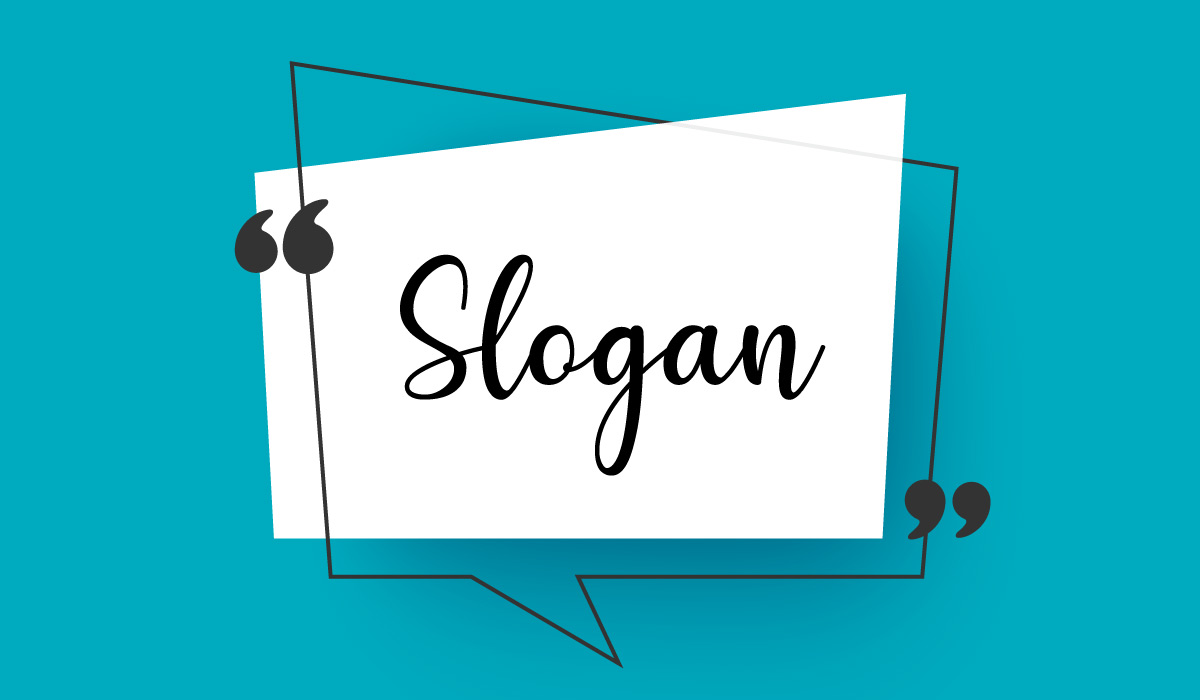
What makes brand slogans and taglines so catchy and memorable? Many people believe it’s because we associate them with well-known brands that offer quality products and services.
However, brand slogans and taglines can be memorable whether the brand they represent is successful or not.
The power of these elements is that they have a self-contained appeal with a lasting effect. The slogan or tagline makes the brand more recognizable, not the other way around.
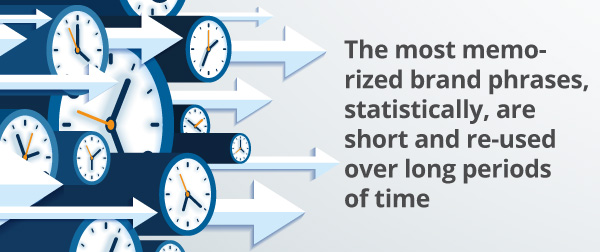
Creating an impactful brand slogan or tagline requires a creative, strategic approach. This article will walk you through what makes a great slogan or tagline. After all, it might just be the thing people remember most about your brand, so let’s make sure it’s effective.
What is a brand slogan?
A brand slogan is a brief phrase or motto that convinces a target audience to buy a product or service, or to believe in something special. Slogans are a simple and effective way to help customers identify a specific brand.
It’s fair to say that the atmosphere and energy of a brand is often captured in a slogan, no matter how brief it may be.
We will break down how to build slogans, as well as how they differ from taglines. But first, let’s make sure you have a solid understanding of brand taglines as well.
What is a brand tagline?
A brand tagline is a set phrase that succinctly conveys a brand’s identity. Successful taglines give off a powerful effect to anyone who reads or hears them. They are often helpful in advertising campaigns and when building up company branding.
Since a slogan and tagline seem so similar, it’s easy to get them confused. Here’s a breakdown of how they are different.
What are the main differences between a slogan and tagline?
It’s quite common for the average person to believe a slogan and tagline are the same thing. They do have some comparable qualities, but are definitely different and each have their own unique purposes separate from each other.
A tagline is a permanent part of a brand that is set in stone. A slogan changes occasionally, and usually represents the current state of a brand and its values. Another thing to point out is that most brands have only one tagline, but they have multiple slogans. A tagline is often integrated into a brand’s elements, and it gives a general vibe or character for products and services. It is specifically about the brand itself.
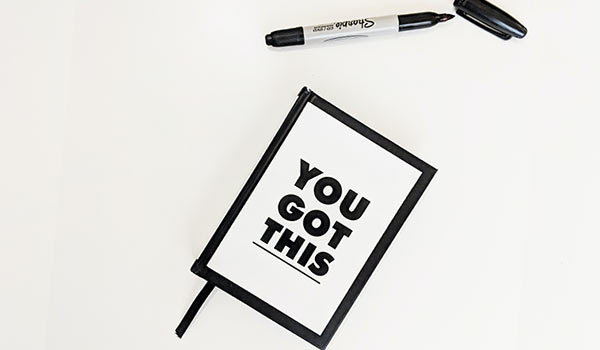
Slogans are meant to be used for a certain period of time, and then replaced by a more relevant phrase in the future. They’re intended to serve the purpose of promoting a new product, and they’re used extensively in advertisements.
Understanding these differences helps you separate what makes each element important. With that in mind, let’s look at some key ways to successfully build slogans and taglines, starting with slogans.
Helpful hints for creating slogans
Creating a powerful slogan could have a massive impact on a certain advertising campaign or product. Though they’re not always used long term, they still require immense focus and creativity. Here are some tips to make sure you get it right.
1. Creativity stands out
In order to truly get creative and stand out, you’ll need to dive into some extensive research into competitor slogans. It’s important that your slogan not only shines on its own, but especially in comparison to your brand peers.
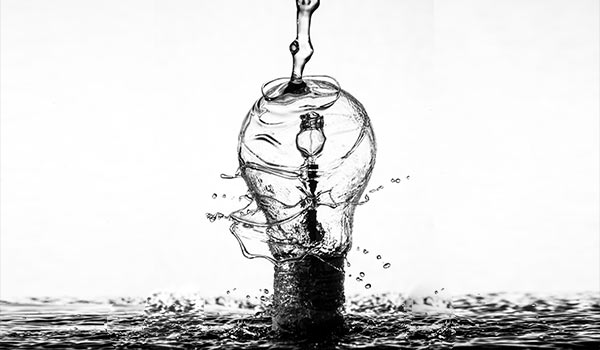
Keep in mind that, since slogans typically come in multiples, you’ll want to be sure to differentiate from previous and current ones. Also, don’t make it too similar to a competing brand’s slogan, or it will be ineffective to customers.
2. Focus on the right groups
A crucial part of constructing slogans is to remember in what way it will be received by your target market. Any phrase you come up with should go out of its way to please them specifically.

How can you structure your slogan to hit the right demographic? First, examine the ways you could exemplify the spirit of your brand in a short phrase.
For example, a fitness brand could include words that inspire or illuminate the idea of activity into their slogan. Remember to get creative with this when possible. Your slogans are not restricted to the type of products you sell. A mundane and ‘unimportant’ product can be seen in a different light with the right slogan.
3. Short and simple is perfect
Above all else, don’t forget that length is a huge factor in this process, and it’s flat out unacceptable to have a slogan that runs too long. The whole idea is to create something short and simple that sticks in a customer’s head. It should be easy to memorize as well. This is the best way to get your point across anyway for this type of saying.

A brief, simplistic slogan should create something memorable for customers, and the rest of the details can come from other marketing areas.
Lastly, don’t forget that short and simple aren’t the same thing. A complex slogan, though short, might go over a customer’s head. Build a creative yet easy-to-understand phrase.
4. Make changes when needed
As we discussed already, the slogan isn’t meant to be permanent necessarily. There are way too many evolving technologies, social issues, language usage and other factors that prevent a slogan from being successful over longer periods of time.

So what can we do to stay relevant, besides setting a time to update our slogans regularly? The key lies in our research, particularly in how well the motto is performing and being perceived by customers. Remember that just because a slogan works now doesn’t mean it will work later. Be prepared to re-evaluate when necessary.
5. Adapt your slogan to brand values
This idea goes overlooked way too often and leads to unsuccessful slogans: Make sure that any slogan you create aligns, in some way, with your brand ideals and values. The phrase you choose shouldn’t ever counteract the main purpose of your brand, its products or its services.

For example, let’s say your brand wants to retain its traditional values while pushing forward in modern technology. In this case, you could implement a slogan that uses traditional language that hints at being modern simultaneously.
Now that you have some tips for building brand slogans, let’s go into how to create effective taglines.
Tips for coming up with taglines
Similar to brand slogans, the most effective taglines are short and simple. So first things first: Create a tagline that is clear, simple and short, saying enough to get the point across without extra fluff and clutter.
Also keep in mind longevity. The tagline isn’t meant to change. Avoid trendy sayings that will lose their meaning in the future. This should be pretty intuitive, but some research will help the process along.

Now, to make sure your tagline works for your brand, here are some different types to choose from. These give you a basic path to follow in order to set up an effective tagline.
- Inspirational. If you want an inspirational tagline, you’ll want it to promote something informative, spiritual and, of course, inspiring. Using uplifting words can make a tagline inspirational. These types of taglines suggest that a brand’s products or services will enlighten the customer’s life.
- Opposing or outstanding. These taglines are meant to show that a brand is bigger and better than brands from the same industry and market. Disney’s tagline, for example, “The happiest place on Earth” has a touch of comparative language – if it’s the happiest place, other places cannot be.
Let’s now take a look at some of the common (and sometimes overlooked) benefits that come with creating powerful taglines and slogans.
Key benefits of both
Here is a breakdown of some of the most important benefits of an effective slogan or tagline. Remember that these will vary, but the general idea can be applied across a wide range of brand types.
Slogan benefits
Slogans can spotlight the unique values of a brand, while guiding and promoting the release of a new product or service. This simultaneous feature gives brands a chance to feed two birds with one scone, moving forward with something new while showing that the brand behind the product or service is worthy of a customer’s purchase.

A slogan gives brands a chance to show off their brand persona in creative ways, as well. Though a slogan doesn’t have to directly address a product or service a brand offers, it can influence the impact a product might have based on the type of personality a brand has. Remember that you want customers to feel they’re connecting with you, because it will help them choose your product over others.
Lastly, slogans are an effective way to define your brand positioning, which in turn helps your target audience understand the ideals and potential benefits your brand offers. It also boosts brand loyalty, which has endless benefits.
Tagline benefits
Taglines help a brand stand out among competitors, emphasizing how they’re unique. They also help customers recognize their brand through a brief phrase that grows in meaning over time. This feeds into the growth of their brand recognition, which further boosts them past the competition.

One of the biggest benefits the tagline offers is it makes certain brand features and benefits clear. Customers who see a tagline usually get some type of idea about the brand behind the tagline, and thus can expect certain things from products and services that brand puts out. This usually gives off a sense of level of quality, though other values might be attached to it as well.
Now that you’re aware of the benefits these elements bring, let’s look at some of the most effective taglines and slogans throughout history.
Examples to consider
I’ve put together three example slogans and three example taglines that I think illustrate how effective and important these elements can be for a brand. Use them as a reference point for your own creations.
3 awesome brand slogans
1. Disney’s “I’m Going to Disneyland”
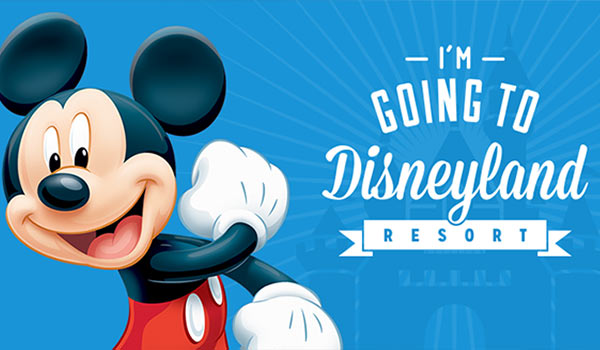
What it means: Disneyland is a physical place, and the saying “I’m going to Disneyland” was to be taken literally initially. However, it morphed into much more, as phrases often do. Eventually, the phrase meant that you’re going to celebrate.
Why it works/worked: This slogan promotes that idea that Disney is the place of joy and happiness, and it is the goal where everyone should want to end up. It’s also quite simple, a mere indication that one is going somewhere.
Key takeaway: A slogan should be universal, and appeal to almost everyone who hears it. I’ve never been to Disneyland, for example, but I still connect with this phrase, as do others who have never experienced it.
2. Nike’s “Just Do It”

What it means: “Just do it” is meant to inspire, and means that you should overcome any excuses burdening you (particularly when it comes to athletics).
Why it works/worked: It’s simple, easy to remember and inspiring. It can work on so many levels, and is a great motivator to push oneself further.
Key takeaway: The Nike brand sells an idea as well as clothing products. Customers attach to the idea the slogan presents, making it easier for them to buy Nike products when they’re considering their own athletic future.
3. Verizon’s “Can You Hear Me Now? Good.”

What it means: The slogan comes from recurring commercials from Verizon that had a man ask his anonymous phone call partner, “Can you hear me now? Good”. He walked all over into odd places to ensure they still heard him.
Why it works/worked: The phrase literally showed that Verizon’s service was everywhere, and phone calls wouldn’t be inhibited by lost calls and muffled voice.
Key takeaway: It can be off-putting to demonstrate your actual products or services in an advertisement, but this slogan made a fake demonstration that was subtle and informing, as well as memorable.
3 effective taglines
1. Apple’s “Think Different”

What it means: This tagline often is interpreted in different ways, and that was intended. It is like a play on words, in that it can mean to think of Apple as different, or that it can mean that you should think differently.
Why it works/worked: It not only shows Apple as creative and unique, but it also separates themselves from their competitors.
It’s also interesting to point out that this fits into the ‘opposing’ type of tagline, which we discussed earlier, since it creates a distinction of outdoing its opponents (different is meant to be a positive here, of course).
Key takeaway: You don’t need a long-winded sentence or big words to create a powerful, creative tagline. Consider how to address many different things and impact a lot of emotions with just a few words.
2. Mastercard’s “There Are Some Things Money Can’t Buy. For Everything Else, There’s Mastercard.”
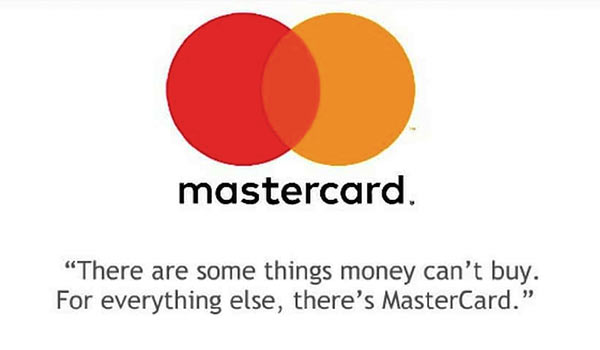
What it means: It is a bit of wisdom that says money can’t buy it all, but it can help fill in the blanks. For example, it can’t buy a moment between you and your favorite opera singer at the show, but it can buy the tickets to that show.
Why it works/worked: This tagline is a catalyst for advertising campaigns, particularly ones that show huge life events happening. Even though the words are basically saying that MasterCard cannot buy you important things, the tagline somehow links them in the customer’s mind anyway.
Key takeaway: Your tagline doesn’t have to be weird or abstract to be effective. This is about as straightforward as it gets, and it has stood the test of time.
3. Samsung’s “the Next Big Thing”
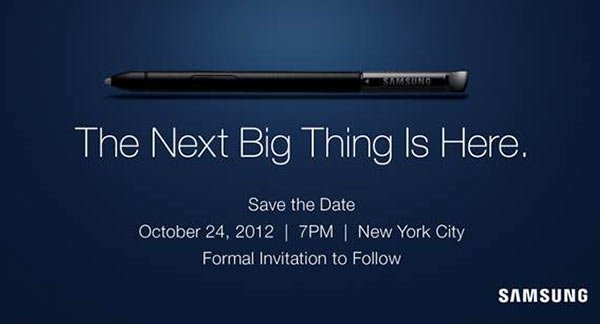
What it means: This tagline means that the Samsung brand is always coming up with and releasing the next thing that will advance technology further.
Why it works/worked: It’s subtle and short without being confusing. It also plays into the industry that Samsung operates in.
Key takeaway: A memorable tagline can go a long way. Think about how impactful a few simple words are, and put them together in the right way.
Final thoughts
Whatever you want to relay to customers, do it in a way that promotes your brand ideals and values. There is a powerful relationship between the two.
When you’ve created your tagline and a few slogans, structure different marketing campaigns around them to help move your brand forward.
If you want to see more ideas about branding, read our branding guide.
